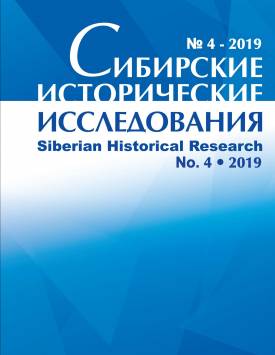The death of the cemetery: new funeral traditions in Europe
The article is dedicated to the analysis of modern trends in funeral rites in Europe. Despite the stability and conservatism of funerary traditions, they are under strong pressure from globalisation trends originating from a new ideology of the funeral rite. The essence of innovative ritual practices, which are based on modern business strategies, is to ensure economic efficiency of the burial process through the use of advanced technologies (cremation, biodegradable capsules, and resomation). The need for mass introduction of such innovations is justified by the deficit and the high cost of cemetery territories, especially in megacities, and by environmental considerations since with disposal technologies currently used a significant amount of toxic and difficult-to-decompose substances enter the soil. The article analyses various formats of modern 'ecological burials' that symbolise the 'death of the cemetery', and which in recent decades have become widespread in several countries of Western Europe (Germany, Austria, and Switzerland) under the name 'forest cemeteries'. In addition, the results of field research conducted at forest cemeteries (Waldfriedhof, Nordfriedhof) in Munich and Poppenheim (Bavaria), as well as at several other European cemeteries are presented. The prospects of further spread of innovative types of burial in Europe, including the post-Soviet countries of Eastern Europe, more specifically Estonia and Russia, are also considered.
Keywords
новые погребальные традиции в Европе, лесные кладбища, этнические захоронения, современные коммеморативные практики, межкультурные взаимодействия, глобальные тренды, new funeral traditions in Europe, forest cemeteries, ethnic burials, modern commemorative practices, cross-cultural interactions, global trendsAuthors
| Name | Organization | |
| Morozov Igor Alekseevich | Institute of Ethnology and Anthropology, Russian Academy of Sciences | mianov@rambler.ru |
| Schreiner Andrianna Anatolievna | Institute of Ethnology and Anthropology, Russian Academy of Sciences | andriannas@icloud.com |
References

The death of the cemetery: new funeral traditions in Europe | Sibirskie Istoricheskie Issledovaniia – Siberian Historical Research. 2019. № 4. DOI: 10.17223/2312461X/26/4
